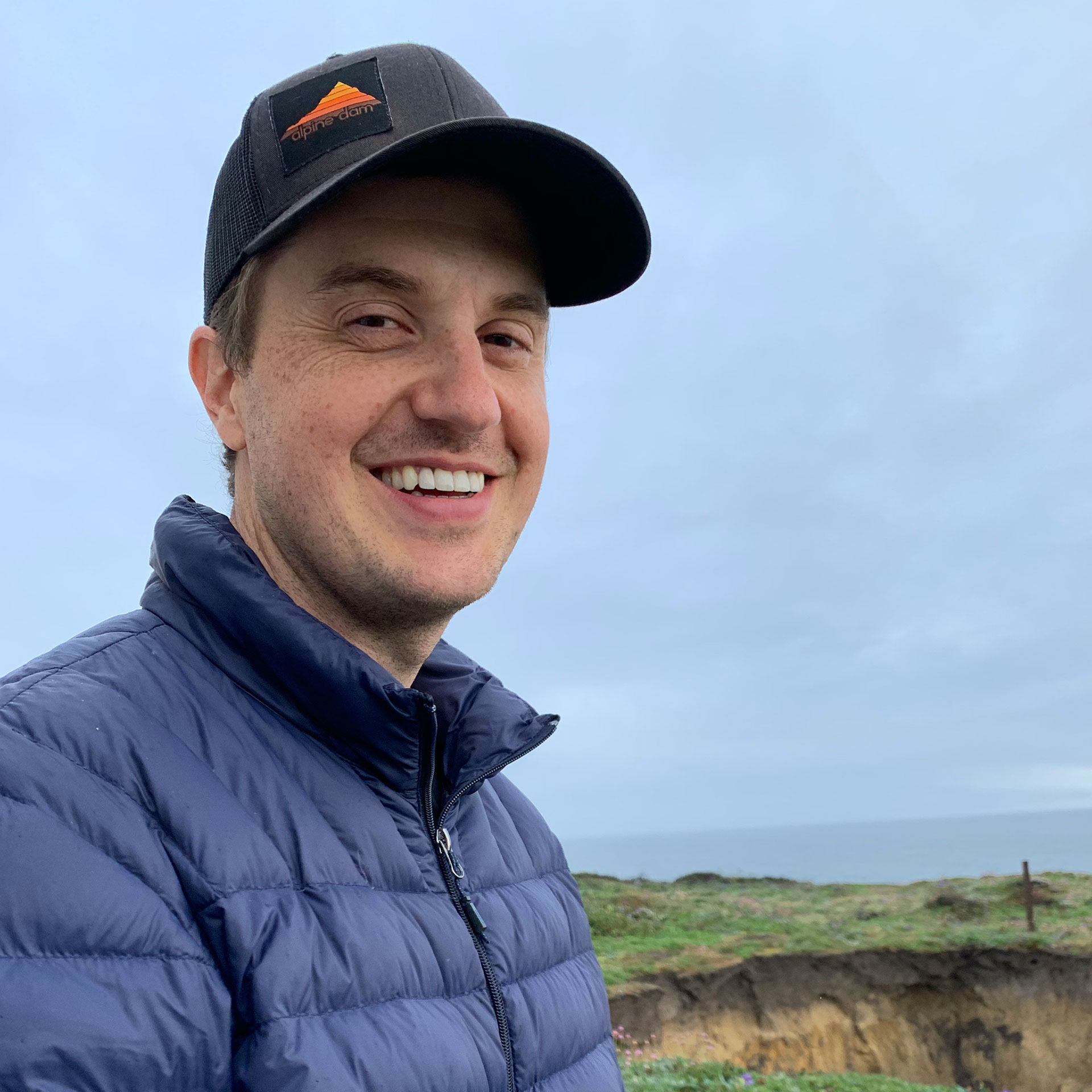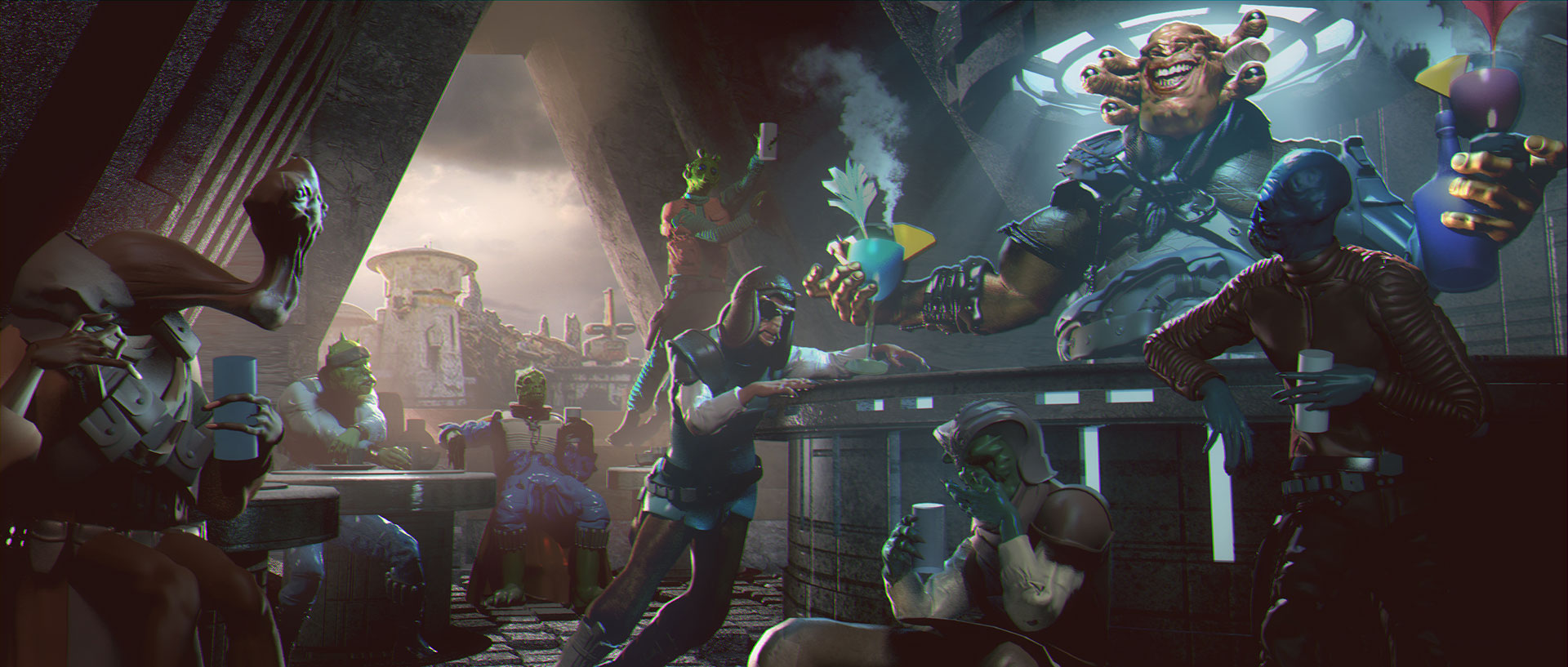ILMxLAB’s upcoming virtual reality experience, Star Wars: Tales from the Galaxy’s Edge, extends and expands the world of Batuu as players meet new characters and discover never-before-seen areas of the planet — all while starring in their own exciting adventure. For the creative team, the project offered a unique challenge: Not only did it need to capture the look and visceral feel of Star Wars, but it also needed to seamlessly blend into Star Wars: Galaxy’s Edge, the immersive lands at Disneyland and Walt Disney World Resort, where audiences were able to visit Batuu for the first time.
As with all things Star Wars, a key creative element was the score. Tales from the Galaxy’s Edge enlisted three different composers, each with their own unique styles and perspectives, to tackle different facets of the experience.

Composer Danny Piccione is a virtual reality veteran, and for Tales from the Galaxy’s Edge he brought his own unique take to one of the most unforgettable musical elements of Star Wars: cantina music. Charged with writing the music that plays in Seezelslak’s cantina, the hub for the entire Tales from the Galaxy’s Edge experience, Piccione pulled from both classic and new inspirations in creating tracks like “Pinteeka Dub.” We chatted with the composer about writing music for virtual reality, collaborating with Walt Disney Imagineering, and his musical journey into Seezelslak’s cantina.
How long have you been scoring virtual reality projects?
This is actually my sixth VR project, now stretching over a span of nearly 5 years. I’ve been very fortunate to work alongside the evolution of VR technology (both hardware and software). I am very excited about the current state of this technology, as it will only get better!
How does your approach differ when creating scores for VR, in contrast to more traditional mediums?
While the approach is somewhat similar, I think the biggest difference is a focus on how much deeper music & sound can affect the player in the overall experience. VR is such an immersive environment and these experiences are remembered more like places you actually visited. Compare this to a film or game you play on a screen, where you are usually aware of the environment around you while playing. This makes VR a much richer and deeper experience overall, therefore the music and sound play an even more crucial role in connecting the player with the experience.
Can you tell us a bit about what it was like working with Skywalker Sound?
I’ve been very fortunate to work on several projects with the interactive audio team at Skywalker Sound, and it is always an absolute treat for me. Skywalker has some of the most talented and innovative individuals to work alongside. Throughout the entire production process there is immense sharing of both technical knowledge and artistic vision from everyone involved, so the inspiration and excitement is always flowing. This makes for a super fun work environment.
Did you work primarily with analog or digital instruments?
Mostly digital, with some analog instruments and synthesizers used. The goal was to achieve a more “exotic” musical style that fits within the Star Wars universe. I’ve been a fan of Star Wars music as long as I can remember, so my aim was to mix historically innovative cantina music styles with a modern electronic twist. Maintaining the “human element” was another important thing for me to keep in mind, as I wanted the music to feel like it was performed and recorded by some sort of creatures (or humans) within the universe, and I think the mix of instrumentation you hear demonstrates that.
What was it like to collaborate with the team at Walt Disney Imagineering to make sure the new cantina music fit with their vision for the Parks?
Deciding what the cantina music should sound like was a collaborative process that drew on inspiration from favorite tracks from other artists as well as the music currently playing in the park’s Oga’s Cantina. We created a music style guide that was consistent with other Star Wars cantina music but also left room for a modern, electronic flare. Secondly, the cantina music style evolved as I saw the early concept images that eventually took shape in the actual environmental spaces. After this process it was clear what I wanted to go after in terms of music that would fit both this area of the project and also into the greater Star Wars galaxy.
There are some really unique instruments used in “Pinteeka Dub”. How did you determine what would make the most sense inside the world of Star Wars?
It was such a cool process designing and picking these instruments. For me it was something I honestly didn’t have to think much about, once I started working it just seemed to happen organically. The Star Wars galaxy was always on the forefront of my mind, constantly guiding me with thoughts of droids, starships, the Force, and so much more! On this particular track, you should be able to visualize your own weird dark creatures playing thunderous drums, metallic junk percussion, wooden flutes, etc. I never limited myself to what I could or couldn’t experiment with, so that definitely led to some fun discoveries along the way which helped shape the overall direction of the track.
Looking back at your time on Star Wars: Tales from the Galaxy’s Edge, is there anything else you wanted to share?
This was a super fun project to work on. Even amidst a global pandemic, I am so excited and proud of what we accomplished and am very excited to share this awesome experience with the world.
Star Wars: Tales from the Galaxy’s Edge will be released on November 19th for Oculus Quest. Learn more about Danny Piccione on his website.

